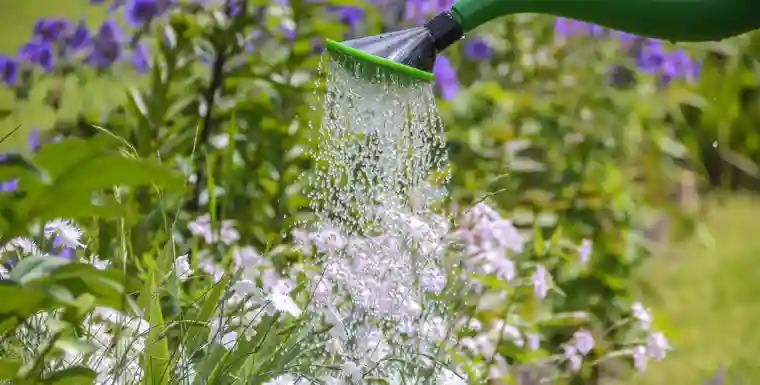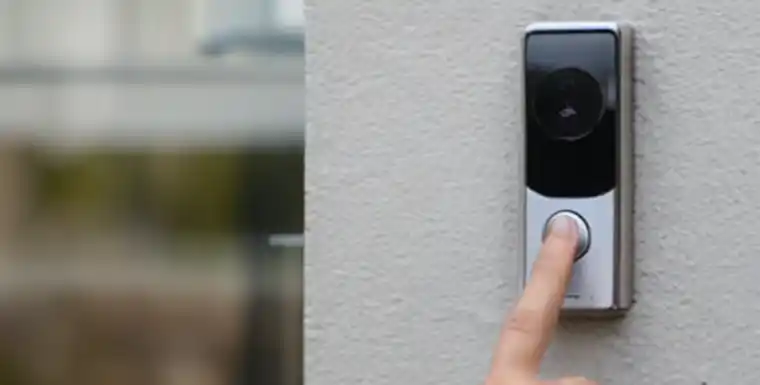Caring for your lawn is a labor of love that pays off in the vibrant greens and lush textures of a well-maintained yard. Whether you’re a green thumb enthusiast or a beginner in the world of gardening, understanding the essentials of lawn care can make the journey less daunting and more rewarding.

In this article, we’ll get into the nuts and bolts of lawn care. We’ll explore the differences between lawn feed and fertilizer, exactly what weed and feed does for your lawn, and how products like Turf Builder can significantly enhance the health and aesthetic of your grass. We’ll also learn how to select the best fertilizers and lawn food for different types of grasses, including centipede grass, and the ideal times to apply these lawn care products.
Don’t worry if you’re not familiar with all the terminology just yet. We’ll break down complex ideas into straightforward, easy-to-understand concepts. Our aim is to help you navigate the often confusing landscape of lawn care and create a thriving lawn that’s the envy of your neighborhood. Let’s get started!
Quick Links
Understanding the Basics of Lawn Care
Before you dive into the lawn care process, it’s important to understand the basic elements involved. Key among these are feed and fertilizer, and how they influence the health and growth of your lawn.

The Roles of Feed and Fertilizer in Lawn Care
Feed and fertilizer are both crucial in maintaining a healthy lawn, but they serve different functions:
- What does feed and weed do? Feed and weed products nourish your lawn while also helping to control and eradicate unwelcome weeds. The “feed” part helps boost the health and growth of your grass, while the “weed” component acts as a herbicide, targeting common types of unwanted vegetation.
- Difference between lawn feed and fertilizer While both feed and fertilizer are meant to nourish your lawn, their formulation differs. Lawn feed is usually a mix of essential nutrients specifically designed for grass, promoting its health and growth. Fertilizer, on the other hand, is a more general term referring to any substance, natural or synthetic, used to enhance soil fertility and increase plant growth and productivity.
If you’re looking for a more natural way to deal with weeds, take a look at our guide to homemade weed killers. Organic and non-toxic, they offer a gentler and affordable alternative to commercial weed and feed products.
Understanding What Turf Builder Does for Your Lawn
Turf Builder is a product designed to encourage dense, vigorous growth in your lawn, giving it a lush, carpet-like appearance. It contains a blend of nutrients, including high nitrogen levels, which promote leaf growth and the rich green color we all love in a lawn.
Introduction to Weed Control for Lawns
To maintain the beauty of your lawn, it’s important to manage weeds effectively. Different weed and feed products target different types of weeds:
- What weeds does weed and feed kill? Most weed and feed products are designed to kill a range of common lawn weeds, including dandelions, clover, and crabgrass. Always check the product label to see which specific weeds it targets.
- What does weed and feed do for your lawn? Weed and feed products nourish your lawn while simultaneously killing weeds. This dual action helps to promote a healthy, attractive lawn by ensuring your grass gets the nutrients it needs without competition from weeds.
- What fertilizer will kill weeds? Not all fertilizers kill weeds. It’s only the ones labelled as ‘weed and feed’ that have the added herbicide to control weeds. These products combine feeding (fertilizing) your lawn and killing weeds into a single application.
Essential Elements for a Healthy Lawn
To grow a healthy, lush lawn, understanding the nutrients it needs is key. Nitrogen is a major player in this equation, as is knowing what those numbers on the fertilizer bag mean.

Nitrogen: The Key to a Lush, Green Lawn
One of the key elements to a lush, green lawn is nitrogen. Nitrogen is the most significant nutrient for promoting leaf growth and the green color of your grass. Thus, when shopping for the best nitrogen fertilizer for lawns, look for one that has a high first number in its nutrient ratio (more on this later). Remember, though, that a balance of nutrients is important. Too much nitrogen can cause rapid, weak growth and even harm your lawn.
Explanation of the Numbers in Fertilizer Types (e.g., 15 0 15)
When choosing a fertilizer, you’ll notice three numbers on the packaging, such as 15-0-15. These numbers represent the percentages of nitrogen (N), phosphorus (P), and potassium (K), respectively, that are in the product.
Centipede Grass Fertilizer 15 0 15
For instance, a centipede grass fertilizer labelled 15-0-15 means it contains 15% nitrogen, 0% phosphorus, and 15% potassium. According to the University of Florida IFAS Extension, this ratio is particularly beneficial for centipede grass, which needs these nutrients in this specific proportion for optimal growth and health.
In general, understanding these numbers can help you choose the best fertilizer for your specific type of grass and its needs.
Seasonal Lawn Care Tips
Every season brings different conditions and challenges for your lawn. Knowing what lawn care tasks to perform and when can make a big difference in maintaining a healthy, beautiful lawn all year round.
Best Springtime Lawn Fertilizer
Spring is an important phase in the lifecycle of your lawn. As the weather warms up, your grass emerges from its winter dormancy and enters a period of active growth. This is when it needs an extra boost of nutrients to support this new growth and recover from the winter stress. A slow-release lawn fertilizer is often the best choice for spring, as it will continuously feed your lawn with the essential nutrients over several weeks.
In addition to nourishing your grass, spring is also a critical time for controlling weeds before they have a chance to establish. Look for a springtime lawn fertilizer that includes a pre-emergent herbicide. This type of product will both feed your lawn and prevent the germination of weed seeds, helping to keep your lawn weed-free from the outset.
Best Lawn Food for Summer
Summers can be tough on lawns. The high temperatures and often dry conditions can lead to stress, causing your lawn to lose its lush, green appearance. During this time, your lawn will appreciate a lawn food that is high in nitrogen to maintain its color and promote growth despite the challenging conditions.
In the second part of summer, pests like bugs and grubs may begin to pose a problem. To prevent these pests from damaging your lawn, consider a lawn food that also contains a pest control component. Products with added iron can also help maintain the deep green color of your lawn during the warm summer months.
Fall and Winter Lawn Fertilizer
As summer fades into fall, your lawn enters a new phase. While above-ground growth slows, the roots of your lawn continue to grow vigorously. Feeding your lawn in the fall with a high-potassium fertilizer helps to strengthen these roots, improving your lawn’s overall health and resilience.
As winter approaches, the right lawn care can make all the difference in how well your lawn withstands the colder temperatures and how quickly it will bounce back when spring arrives. A winterizer fertilizer applied in late fall can help to prepare your lawn for winter, providing the nutrients it needs to endure the cold months ahead. A strong, well-nourished lawn is your best defense against winter damage and disease.

How to Choose and Apply Fertilizer
Choosing and applying the right fertilizer can have a major impact on the health and appearance of your lawn. However, the process can be daunting if you’re not familiar with it. Let’s break it down into more manageable steps.
How to Choose the Best Fertilizer for Your Lawn
The first step is understanding what type of grass you have and what its specific needs are. For instance, centipede grass thrives with a particular type of fertilizer, the best fertilizer for centipede grass being one with a ratio of 15-0-15 for nitrogen, phosphorus, and potassium. These nutrients are key to the healthy growth and vibrant color of centipede grass.
The condition of your lawn is another important factor to consider. If you have a new lawn, an established lawn with some bald patches, or an older lawn that’s looking a bit tired, different products will suit these scenarios best. If you’re unsure about which commercial products to choose, you can check out our in-depth review of the top 5 lawn feed products on the market.
Timing Your Lawn Fertilization: Before Rain or After Mowing?
The timing of your fertilization is crucial for the best results. It’s generally a good idea to fertilize your lawn before rain, as the water can help the fertilizer to penetrate the soil and get to the roots of your grass. However, if there’s no rain in the forecast, watering your lawn after applying fertilizer will serve the same purpose.
Also, consider the timing of your mowing. The ideal time to apply weed and feed is a few days after mowing. This ensures the weeds are actively growing and will take up the weed-killing component of the product more effectively.
Applying Weed and Feed: Steps for Success
Learning how to spread weed and feed effectively can greatly enhance its effectiveness. Here are a few pointers:
- Check the weather. Weed and feed products work best when the leaves of the weeds are damp, as the product sticks to them better. A calm, cool morning with dew on the grass is the perfect time to apply weed and feed.
- Use a spreader. A spreader can help ensure you apply the weed and feed evenly over your lawn. Follow the settings instructions on the product bag for best results.
- Water your lawn. If there’s no rain forecast within 24 hours of applying the product, water your lawn lightly to activate the weed killer.
Considerations for New Grass
When dealing with new grass, be cautious when using weed and feed. Young grass can be sensitive to the weed-killing components in these products. It’s generally recommended to wait until you’ve mowed your new lawn three or four times before applying a weed and feed product. Always read the product label for specific instructions.
Lawn Care for Pet Owners

For pet owners, maintaining a lush and beautiful lawn may come with extra challenges. Yet, it’s possible to create a thriving lawn that’s also safe for your four-legged friends. The key is choosing pet-friendly products and strategies.
Pet Safe Grass Feed
One of the first things to consider is choosing a pet-friendly lawn feed. There are a variety of products on the market that are designed to be safe for pets while still providing the essential nutrients your lawn needs to thrive. Look for products labelled as pet safe, and always follow the application instructions to ensure safety.
Weeds and Pets
When dealing with weeds, be cautious about the products you use. While some weed killers can be harmful to pets, there are pet-safe alternatives available. If you’re not sure whether a product is safe, check the label or consult with a lawn care professional or your vet.
Even with pet-safe weed killers, it’s a good idea to keep your pets off the lawn until the product has fully dried. The time needed can vary, so always check the label for specific instructions.
Creating a Pet-Friendly Lawn
In addition to using pet-safe products, there are other steps you can take to create a lawn that’s friendly for your pets. For instance, leave a section of your lawn longer for your pets to enjoy, as some pets love to frolic and roll in longer grass. Also, consider using hardier grass types in areas where your pets play most to withstand the wear and tear.
Remember, the best lawn care strategy is one that meets the needs of your grass while also keeping your pets safe and happy.
Frequently Asked Questions
What’s the difference between lawn feed and fertilizer?
Lawn feed and fertilizer both nourish your lawn, but in different ways. Lawn feed is a mix of essential nutrients specifically designed for grass, promoting its health and growth. Fertilizer, on the other hand, refers to any substance used to enhance soil fertility and increase plant growth and productivity, and can be used in various types of gardens, not just lawns.
How should I apply weed and feed to my lawn?
For the best results, apply weed and feed in the early morning when the leaves of the weeds are still damp. Using a spreader can help ensure even application. If there’s no rain forecast within 24 hours of applying the product, lightly water your lawn to activate the weed killer. Remember, it’s also best to wait a few days after mowing before applying weed and feed.
Are there lawn care products safe for pets?
Yes, there are several lawn care products on the market that are safe for pets. Look for products labelled as pet safe. Even with these, it’s a good idea to keep your pets off the lawn until the product has fully dried. If you’re unsure about a product’s safety, consult with a lawn care professional or your vet.





